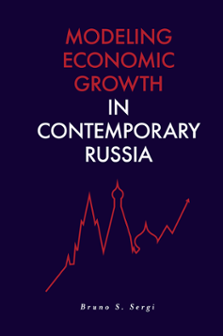
Index
Modeling Economic Growth in Contemporary Russia
ISBN: 978-1-78973-266-5, eISBN: 978-1-78973-265-8
Publication date: 23 May 2019
Citation
(2019), "Index", Sergi, B.S. (Ed.) Modeling Economic Growth in Contemporary Russia, Emerald Publishing Limited, Leeds, pp. 297-305. https://doi.org/10.1108/978-1-78973-265-820191012
Publisher
:Emerald Publishing Limited
Copyright © 2019 Emerald Publishing Limited
INDEX
- Prelims
- Chapter 1 Financial Development and Economic Growth in Russia
- Chapter 2 The Bank of Russia: Modeling Parameters of Financial Sustainability in Low-growth and High-volatility Environment
- Chapter 3 Financial Stability: Modeling the Russian Budgetary and Tax Policy with Fiscal Multipliers’ Attraction
- Chapter 4 How to Create Competitive Organization: Leveraging Strategic Capabilities in Russia
- Chapter 5 Russia’s Transition to an Innovation-based Growth: Problems and Opportunities
- Chapter 6 Education and Inclusive Development: Puzzle of Low-learning Equilibrium
- Chapter 7 Infrastructure Public–Private Partnership Projects: Budget Consolidation Policy in Russia and Government Expenditures’ Efficiency Increase
- Chapter 8 The Agro-industrial Complex: Tendencies, Scenarios, and Regulation
- Chapter 9 Smart Cities and Economic Growth in Russia
- Chapter 10 Green Investment in Russia as a New Economic Stimulus
- Index